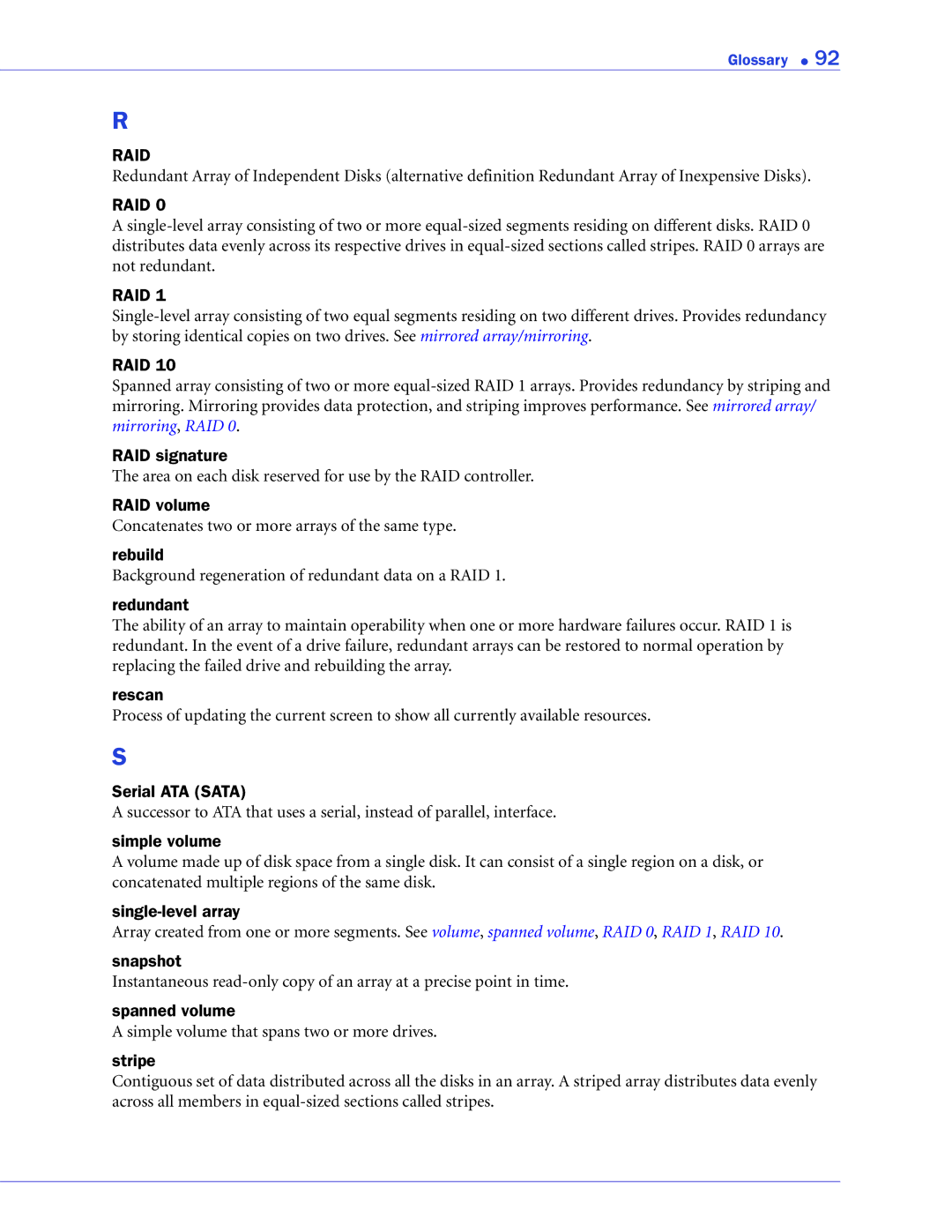
Glossary ● 92
R
RAID
Redundant Array of Independent Disks (alternative definition Redundant Array of Inexpensive Disks).
RAID 0
A
RAID 1
RAID 10
Spanned array consisting of two or more
RAID signature
The area on each disk reserved for use by the RAID controller.
RAID volume
Concatenates two or more arrays of the same type.
rebuild
Background regeneration of redundant data on a RAID 1.
redundant
The ability of an array to maintain operability when one or more hardware failures occur. RAID 1 is redundant. In the event of a drive failure, redundant arrays can be restored to normal operation by replacing the failed drive and rebuilding the array.
rescan
Process of updating the current screen to show all currently available resources.
S
Serial ATA (SATA)
A successor to ATA that uses a serial, instead of parallel, interface.
simple volume
A volume made up of disk space from a single disk. It can consist of a single region on a disk, or concatenated multiple regions of the same disk.
Array created from one or more segments. See volume, spanned volume, RAID 0, RAID 1, RAID 10.
snapshot
Instantaneous
spanned volume
A simple volume that spans two or more drives.
stripe
Contiguous set of data distributed across all the disks in an array. A striped array distributes data evenly across all members in
